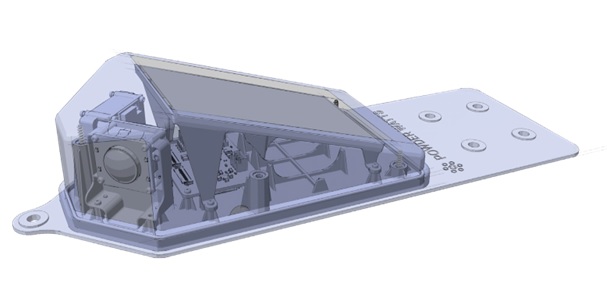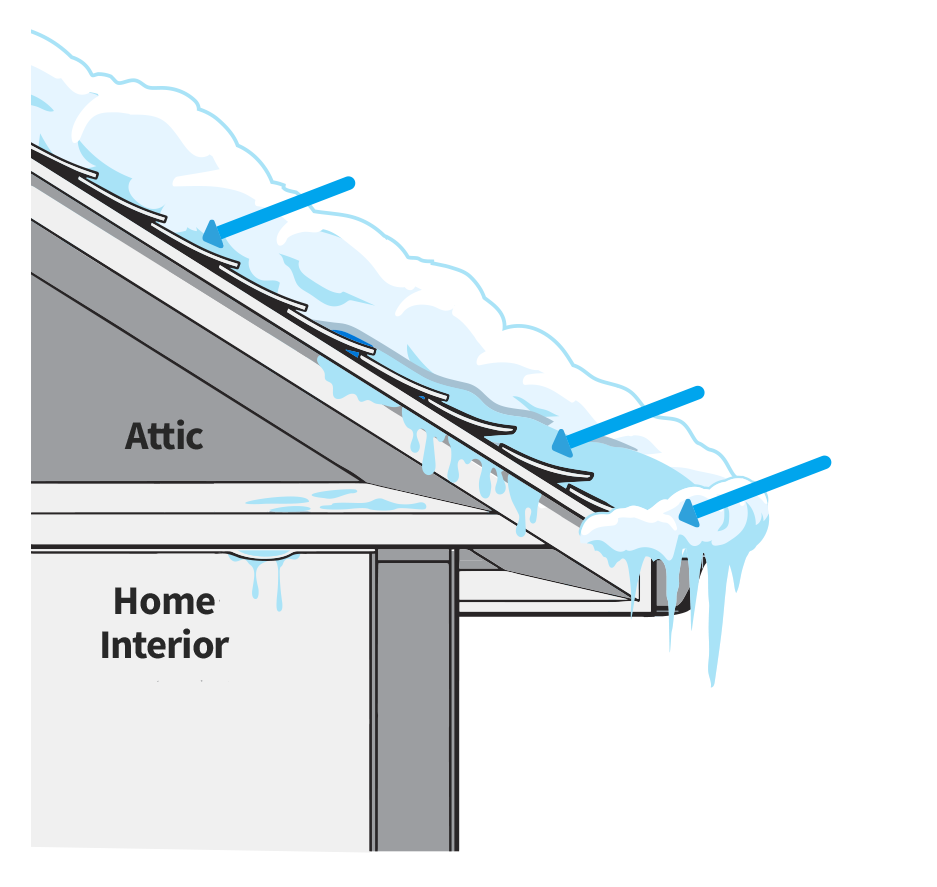
Solar Panel
- 4 Ah capacity battery, enables 6 month of uninterruptible operation during the wintertime
- 1.2W solar panel recharges the device in the summer, provides power backup in the winter times
Dual camera system
- Panoramic view of the roof
- Excellent 1080p image quality
- Integrated night-vision capabilities
Mounting Plate
- Adaptive fittings, supporting multiple roof types
- Set-and-forget installation procedure
UV-Resistant Enclosure
- Water and ice-proof IP68 enclosure
- Extreme temperature operation ranges
The power of constant monitoring via the world’s most advanced computer vision, delivers constant protection and real-time updates combined with massive energy savings.
Did you know that each “circuit” of heat tape draws an average of >2,000 watts? That is the equivalent of 200 10W LED lightbulbs running all the time…
Obviously this load is needed to protect your home or business – that is why it’s installed in the first place.
If only there was a way to automatically activate the snow melting process only when needed – and once that melting was done – go into standby mode awaiting more snow or ice to arrive, thousands of dollars of wasted electric could be saved.
That is why the US National Science Foundation, Amazon and NVIDIA all supported Powder Watts in developing a solution to this problem. USPTO awarded – Powder Watts the Smart Snowmelt Control Solution.
What’s going on up on the roof?
Roof top snow and ice melt cables are essential for structure protection against ice dams. Snow buildup on roofs makes it difficult to see if heat cables need to be turned on or not.

Why: Heat cables cost a lot to run – both in money and environmental impact. Heat cables draw so much power they typically double to quadruple the electric usage of the structure they protect!
Powder Watts smart camera technology is able to see inside these caves to accurately determine when those cables need to be on or off. No more guessing from the outside when cables should be turn on to create the proper channel for ice melt to drain.
How it works: Utilizing the same smart camera technology we see in collision avoidance for cars, thermal imagery for first responders and smart software messaging, the Powder Watts system is able to accurately detect when you are most at risk of roof damage from winter conditions and efficiently turn on and off your heat cable systems at the optimal times
Previous state of the industry:
The 1970’s were groovy – but not for energy saving.
In the 1970’s thermostats that monitor temperature on the side of the building were attempted out of desperation to try and keep heat cables from running into the warm seasons.
Sadly, this did little to save energy as most of the winter it is below the set temp. Additionally, temp on the side of the building doesn’t inform on what needs to be known: is there a clear drain channel for new melt water to get safely off the roof.
At Powder Watts “With Vision, We Know”
This means that with direct observation of conditions right on the heat cable, every hour, intelligent decisions can be made – and the building owner gets an informed understanding of the actual real-time performance of their critical building protection system.
Energy savings, monitoring, alerting, and real-time views all make Powder Watts a technical solution to both update existing heat tape and hot edge system as well as be applied at time of build.
With each section of heat cable updated with Powder Watts tech delivering up to 6MWh or greater of energy savings each year, Powder Watts can help developers and builders achieve energy efficiency goals – including for LEED certification.
What Customers are saying:
Customer case study quote:
